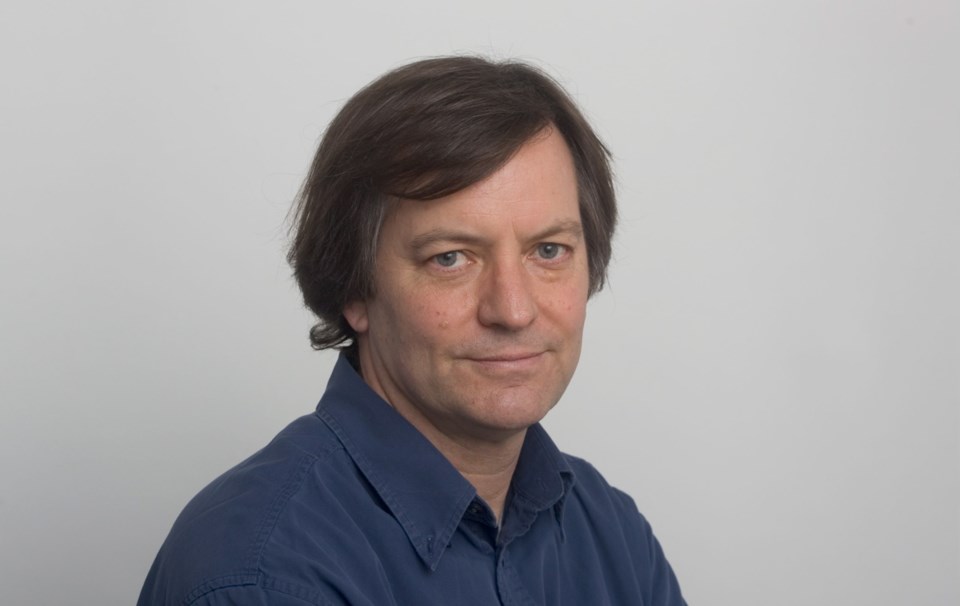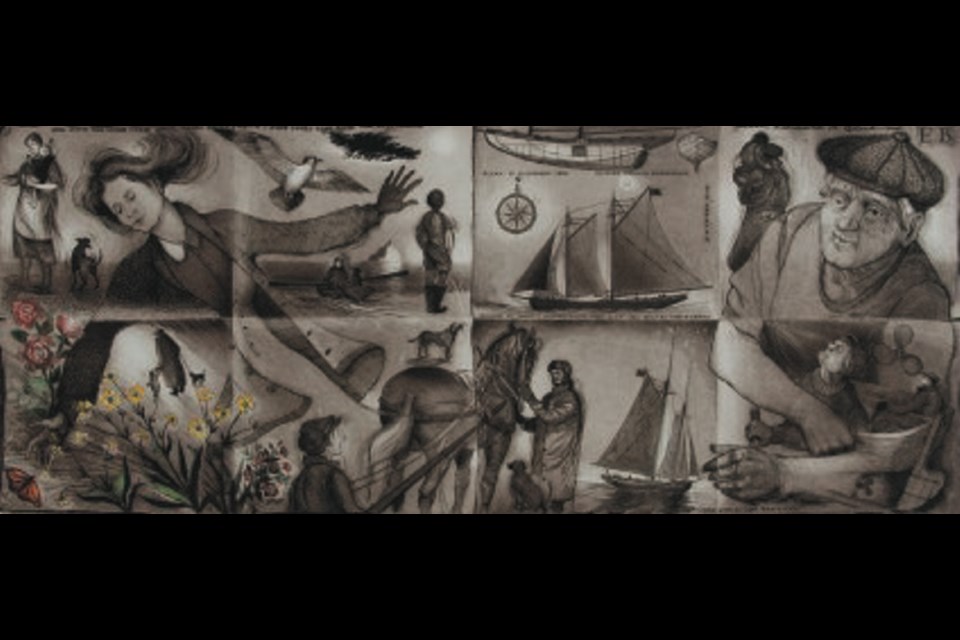 David Blackwood: A Major Exhibition, Winchester Galleries 2070 Oak Bay Ave., 250-595-2777, until Dec. 23.
David Blackwood: A Major Exhibition, Winchester Galleries 2070 Oak Bay Ave., 250-595-2777, until Dec. 23.
David Blackwood is an artist I admire. He comes from an outport in Newfoundland called Wesleyville, where his forefathers were master mariners.
Arriving to study at Toronto’s Ontario College of Art in 1959, he seemed an unlikely candidate to become one of our country’s most popular artists. At that point, the art world was dedicated to abstract art, and any hint of subject matter was forbidden. Great emotional gobs of paint, smashed onto huge canvases, was the order of the day.
Yet Blackwood went his own way. Moreover, he chose to do so in the medium of etching — an old-fashioned method based on meticulous drawing that usually results in small-scale, black and white work. Not only were his images representational but, worse still, they were narrative.
“A short while ago that was a no-no,” he mused in a recent telephone conversation.
Working in his Port Hope studio on the shores of Lake Ontario, Blackwood has ever since provided us with fascinating insights into the Atlantic fisheries and the ventures of the sealing fleets in former times. In addition to his unquestionable skill at drawing, Blackwood found inspiration in the form of a marvellous collection of photos from about 1900 by a man named Oakley. And always before young Blackwood’s eyes were illustrations by the greatest of the Victorian engravers, Gustave Doré.
“The only visual material I had when I was a boy was this great big family Bible, illustrated by Gustave Doré,” Blackwood told me.
There he found drama aplenty, though there was enough in his life, living perched between the Rock and the unforgiving ocean. With talent, persistence and a compelling nature story, Blackwood somehow created artworks that transcended the superficial doctrine of Abstract Expressionism.
There is much more to Blackwood than narrative. A few years ago, he surprised and delighted us with his watercolours of flowers, a subject and medium disdained by the priesthood of High Art. Yet his familiarity with paper, his skill at drawing and his experimental nature resulted in large, gorgeous paintings with a unique and captivating technique. Amid the voluptuous colours, hints of narrative crept in.
About the same time, Blackwood made a series of oil paintings of a battered shed door near his boyhood home by the sea. These were door-sized and, as the series continued, this became a site for painterly experimentation. For his last show in Victoria, he sent a canvas based on simple signal flags, the basis of a long-running series. Some of the new ones, bigger than ever, are on show in Victoria.
When Blackwood was about eight or nine years old, in 1949, “sa���ʴ�ý joined Newfoundland,” as his father liked to say. The artist explained: “My father, who was a master mariner, and all his other fellow sea captains, were forced to take an exam. The Canadian Department of Transport required each captain to write an exam. If you passed you got your ‘ticket.’ And, my God, I remember my father — he made a set of the international code of signal flags. He used a playing card as a pattern and traced out the alphabet, and he tested himself over and over and over.
He said to me, ‘You know, if you’re smart, you’re going to learn how to do this.’ ” Indeed, they have been useful to the lad.
The flags are, for Blackwood, a source of abstract geometric patterns on which to base paintings. I asked about any modernist painters who influenced him.
“Mondrian to a degree, but he’s very static,” he mentioned. And “a big Jack Shadbolt painting that I was tremendously impressed with — it came close to being a flag. When Jack Bush was struggling with the representational landscape stuff, and wanted to break into the more abstract form of painting, Clement Greenberg said: ‘What you have to do is set yourself up and paint a whole set of flags. That’ll free you from the representational element.’ ”
Blackwood has been away from his studio for much of the past two years. When travelling with the Bedouins in the desert of Jordan, he had what he thought was indigestion.
On returning to sa���ʴ�ý, he learned it had been a heart attack, which led to bypass surgery, and he spent 15 months in care.
“Anyway, I’m fine now,” he assured me. “I’ve graduated from a wheelchair to a walker and now a cane. I can walk to the studio and put in a good day’s work every day.”
What did he do while he was bed-ridden?
“It gives you a great chance to think about all sorts of things,” he said with a smile.
“I did not stop working, and was able to complete about 15 watercolours, of a certain size, while in the hospital. It was the thing that really kept me going. Painting and reading kept me going.”
And what did he read? He paused, and offered that he wasn’t much into novels. On the top of his mind were books by two outstanding Canadian writers: Margaret MacMillan has written Paris 1919, then its “prequel,” The War that Ended Peace, and History’s People, “a cross-section of individuals that she admires.” Blackwood was then quick to mention Ross King, who came to his attention with his book about the Group of Seven. Since then, King has written books on Brunelleschi’s dome in the cathedral in Florence, and also about Leonardo and his fresco of The Last Supper. Canadians with stories to tell …
At this point, I sensed David Blackwood was ready to get back to work. You can see a survey of his concerns at Winchester Galleries, which has hung all three floors of its Oak Bay location with his artistry. It makes a good story.



